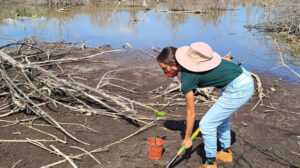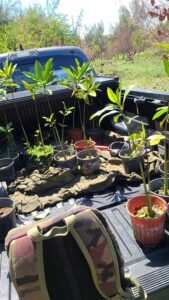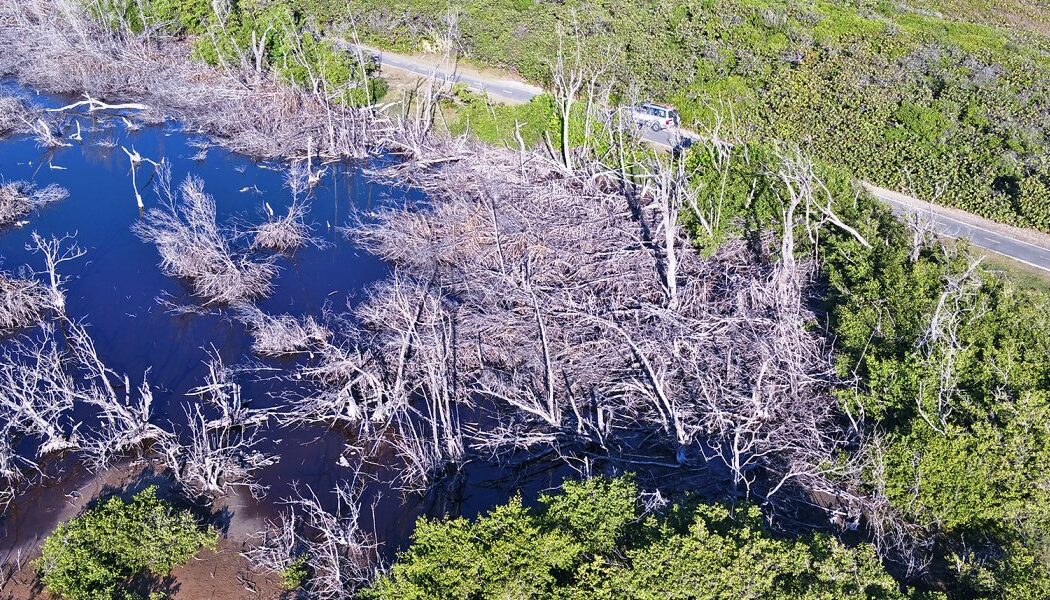Collaborating with the University of Wisconsin–Madison, Robert J. Mayer, a biology professor at the University of Puerto Rico at Aguadilla and student volunteers recently secured an additional $500,000 from the U.S. Fish and Wildlife Service (USFWS) for the restoration of Puerto Rico’s distressed northern mangrove forests. The first such grant was won in 2021.
The non-profit Vida Marina plans to use the funding to restore a total of 59 hectares (146 acres) of mangroves connecting three coastal communities in the northeast: Espinar Beach in Aguada, Jobos Beach and Secret Spot in Isabela, and the Finca Nolla Nature Reserve in Camuy.
 “Health is central to everything,” says Maria Moreno, associate for experiential education at the UW-Madison Global Health Institute (GHI) and multicultural relations manager for the DPLA Earth Partnership Program.
“Health is central to everything,” says Maria Moreno, associate for experiential education at the UW-Madison Global Health Institute (GHI) and multicultural relations manager for the DPLA Earth Partnership Program.
“Surging sea and salt water damages everything—health, water, land, infrastructure, community dynamics, family connections to traditional practices and the ability to feel that you are part of a community that can bounce back,” she added.
Mangrove forests are one of the primary lines of defense for Puerto Rican coastal communities, protecting human and animal life, structures and infrastructure from roads to sanitation. Together with other ecosystems, they offer a buffer against storms, coastal erosion and flooding.
They provide critical habitat for plants and animals and contribute food, including fish, oysters, clams and crabs, building materials and fuel for human use.
The current climate emergency—including earth’s rising temperature—increases the potential for hurricanes and sea surges that can degrade or destroy ecosystems such as coastal dunes and mangroves protecting the villages.
The NFWF project, “Using Mangrove Restoration to Improve Coastal Community Resilience in Puerto Rico,” will focus on the ecological restoration of four mangrove forests devastated by the 2017-18 storms in the western part of the island.
 Restoring about 146 acres of the mangroves will improve storm protection, resilience and ecosystem services for three communities.
Restoring about 146 acres of the mangroves will improve storm protection, resilience and ecosystem services for three communities.
Principal investigator, UW-Madison alumnus Robert J. Mayer, is a biology professor at the University of Puerto Rico at Aguadilla, director of Vida Marina and a former GHI Visiting Scholar. He is leading the project with DPLA Professor David Bart and an Earth Partnership team, including Director Cheryl Bauer-Armstrong and Moreno.
“It is very important that we start restoring these highly vulnerable sites as soon as possible to protect habitats and communities from future extreme weather events,” Mayer says.
Some of the project activities will include restoration of the area’s hydrology, site preparation, nursery plant propagation, planting and management. The Earth Partnership team will train 40 community team members and teachers, who will lead 330 community volunteers in site restoration and monitoring.
Bauer-Armstrong and Moreno will facilitate community dialogues to raise awareness, build trust and credibility and gain feedback from communities about the restoration process.
“The connection to health is very direct because these communities are right there, right next to the mangroves,” Moreno says. “Schools, hospitals, everything is within walking distance of the dunes or the mangroves. … For communities, the environmental devastation environmentally—from lost sand dunes and damaged mangroves—is enormous.”
Mayer has worked since 2007 on the ecological restoration of sand dunes along the north coast of Puerto Rico. With the dune and mangrove restoration projects, the scientists are also working to show the connections between health, environment and climate change, Moreno says. Mayer’s connections with UW-Madison also open up new opportunities for collaborations with Puerto Rico.
Photos courtesy of Robert Mayer.

